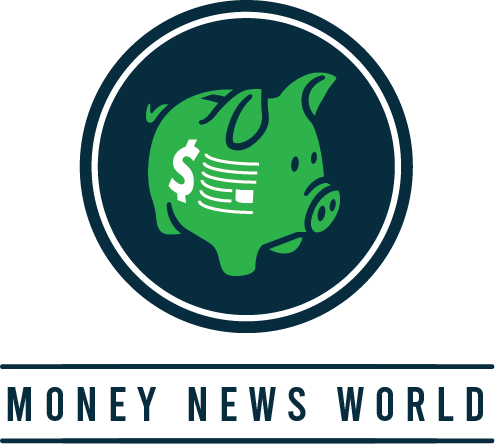As 2025 unfolded, financial markets faced a mix of optimism and uncertainty. The year-end rally in December gave investors hope, but as the first quarter progressed, reality set in. Inflation remained a concern, and central banks hesitated to make any decisive moves on interest rates. Hopes for early rate cuts faded, and the Federal Reserve, along with the European Central Bank and the Bank of England, signaled a more cautious approach. This uncertainty weighed on equity markets, particularly in February when the Nasdaq saw a sharp pullback, recording its worst month since April 2024. The S&P 500 and Dow Jones also saw declines, reflecting broader concerns about slowing economic momentum and stretched valuations.
Commodities, on the other hand, remained resilient. Gold continued to attract investors looking for stability amid uncertain economic signals. Oil prices fluctuated as supply chain dynamics and geopolitical risks kept traders on edge. The demand for commodities as a hedge against market instability has only grown stronger, with investors seeking diversification to protect their portfolios from unexpected shocks.
Which Trends Will Rule 2025?
While short-term market fluctuations create opportunities, the bigger picture for 2025 revolves around structural shifts in trading and investment behavior. One of the most significant trends shaping the market is the rapid expansion of AI-driven trading. What was once a tool reserved for institutional investors is now widely accessible, with more traders integrating machine learning and real-time analytics into their strategies. As AI continues to evolve, it will redefine how market participants identify trends, manage risk, and execute trades.
Retail trading is another force that shows no signs of slowing down. More individuals are engaging with markets, fueled by better access to information, advanced trading platforms, and lower costs. Cost-efficiency remains a major priority, as traders seek ways to minimize expenses while maximizing returns. Zero commission trading has gained widespread popularity, providing an opportunity for traders to avoid excessive fees and execute trades more freely. However, not all platforms offering zero commission trading operate with full transparency. Some offset costs through wider spreads or slower execution speeds, making it essential for traders to evaluate their options carefully. As competition in the brokerage industry intensifies, platforms that genuinely offer cost-effective trading conditions will continue to attract the most attention.

Another defining trend of 2025 is the growing importance of commodities as a hedge against economic instability. Gold remains a key asset for risk-averse investors, while industrial metals and energy markets are becoming increasingly relevant as global infrastructure projects and policy shifts drive demand. The ability to navigate these markets effectively will separate successful traders from those who struggle to keep up with shifting economic conditions.
What Is Expected in March?
March is shaping up to be a pivotal month for traders, as key economic events and market shifts set the tone for the months ahead. The Federal Reserve’s upcoming decision remains at the center of attention. After months of speculation, the market is eager for clarity: will rate cuts come sooner, or will policymakers hold steady, prioritizing inflation control over economic growth? The answer to this question will likely dictate the next major moves in stocks, bonds, and commodities.
Meanwhile, earnings reports from major companies, particularly in the tech sector, will provide insight into whether recent gains are sustainable or if a broader market correction is on the horizon. AI-driven stocks, which dominated market narratives in 2024, now face heightened scrutiny. Investors are asking whether valuations remain justified or if momentum is starting to fade. At the same time, economic indicators from the U.S. and Europe will offer clues about whether growth is stabilizing or if recession fears will make a return.
For commodity markets, March could be a turning point. Inflation remains a lingering issue, and as long as central banks stay cautious, assets like gold and oil could continue attracting investors looking for inflation hedges. With demand dynamics shifting and supply chains under pressure, traders are closely watching energy prices and broader commodity trends for potential opportunities.

Upcoming Trends: What’s Coming Next?
As markets move deeper into 2025, several key trends are emerging. One of the biggest questions remains the pace and timing of interest rate adjustments. Traders are no longer asking if rates will be cut, but when and by how much. While markets had initially expected aggressive rate reductions, policymakers seem reluctant to move too quickly, signaling that inflation is still a concern. Any delays in rate cuts could prolong market volatility, impacting both equities and fixed-income markets.
Technology remains another major driver of market sentiment. AI and automation are no longer just trends, they have become an essential part of trading and investment strategies. Institutional investors and hedge funds are relying more heavily on algorithmic trading and machine learning models to analyze markets, while retail traders are adopting AI-powered tools to refine their decision-making processes. Those who integrate advanced analytics into their trading strategies are likely to gain a competitive advantage, as traditional methods become less effective in today’s fast-moving financial environment.
Commodities are also expected to play a larger role in portfolios this year. With economic uncertainty persisting, more investors are looking at gold, oil, and industrial metals as diversification tools. The long-term outlook for energy markets remains unclear, as geopolitical tensions and global policy shifts continue to influence supply and demand. Traders who can identify emerging trends in these markets will be well-positioned to capitalize on potential price swings.
Final Thoughts
Spring 2025 presents a mix of opportunities and challenges for traders. While markets remain hopeful for central bank rate cuts, the timing of these moves remains uncertain, creating potential for volatility in both equities and fixed income. The continued rise of AI-driven trading strategies is reshaping how investors approach the market, while commodities are emerging as a key asset class for diversification.
At the same time, cost-efficiency remains an essential factor in trading success. Platforms such as Morpher that offer true zero commission trading without hidden costs will continue to stand out, allowing traders to execute their strategies without unnecessary expenses eating into their profits. As the market landscape evolves, traders who stay informed, remain adaptable, and focus on long-term trends will be best positioned to navigate 2025 profitably.
